Introduction
Science provides us with a framework for understanding the natural world. Yet, the universe is full of mysteries that continue to baffle even the brightest minds. These unexplained scientific phenomena stretch the boundaries of what we think is possible, leaving us in awe and inspiring our curiosity about the true nature of reality.
Let’s embark on a journey to explore 15 of the most perplexing and mind-bending unexplained phenomena:
15 Unexplained Scientific Phenomena
- The Hessdalen Lights: Eerie floating orbs of light in Norway.
- The Hum: A mysterious, low-frequency sound heard around the world.
- Ball Lightning: Rare and unpredictable spheres of electricity.
- Animal Rain: Creatures falling from the sky.
- Earthquake Lights: Colorful flashes of light observed during earthquakes.
- The Placebo Effect: Healing through the power of belief.
- Near-Death Experiences: Vivid sensations reported by people close to death.
- Spontaneous Human Combustion: Unexplained cases of people bursting into flames.
- Déjà Vu: The powerful feeling of having already experienced something.
- Precognition: Accurate glimpses into the future.
- The Wow! Signal: A potential alien radio signal detected in 1977.
- The Taos Hum: A persistent hum heard by residents of Taos, New Mexico.
- Naga Fireballs: Unexplained glowing orbs rising from the Mekong River.
- The Bloop: An ultra-low-frequency underwater sound of unknown origin.
- Dark Matter: An invisible substance thought to make up most of the universe’s mass.
1. The Hessdalen Lights
Since the 1930s, the Hessdalen Valley in Norway has been a hotspot for mysterious lights. These orbs, ranging from red, yellow, and white to even green, appear in various sizes and can be stationary or move erratically at high speeds. Their unpredictable behavior and long duration (sometimes lasting for minutes) make them a true scientific enigma.
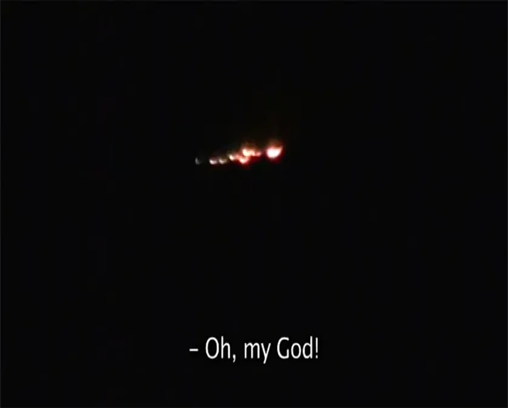
Possible Theories: Several explanations attempt to demystify the Hessdalen Lights. One theory suggests they are caused by natural gas pockets in the valley that ignite upon contact with air, creating the glowing orbs. Another theory proposes the lights might be a product of piezoelectric effects, where pressure on certain crystals generates electricity, leading to the observed light phenomena. Additionally, some researchers speculate that the valley’s unique geological formations might influence the Earth’s magnetic field, creating conditions for unusual electrical discharges responsible for the lights. However, none of these theories have been definitively proven, leaving the Hessdalen Lights a captivating mystery.
2. The Hum
Ever had a persistent, low-frequency droning sound in your ears that nobody else seems to hear? You might be experiencing the Hum. Reported in various locations worldwide, including the US, UK, and New Zealand, this phenomenon affects only a small percentage of the population. The sound itself is often described as a continuous hum, rumble, or vibration, ranging from barely audible to quite disturbing.
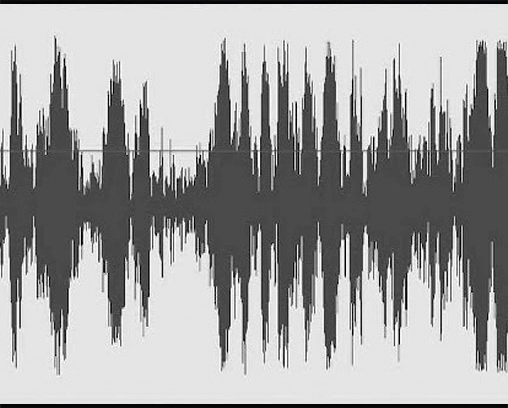
Possible Theories: The elusive nature of the Hum makes it challenging to pinpoint its exact source. Some potential explanations include:
- Industrial sources: Industrial machinery, power lines, or even traffic noise could be misinterpreted as the Hum by some individuals.
- Natural phenomena: The Earth’s geological processes, like ocean waves interacting with the coastline or wind blowing through certain structures, could generate low-frequency vibrations perceived as the Hum.
- Inner ear issues: In some cases, tinnitus, a condition that causes ringing or buzzing sounds in the ear, might be mistaken for the Hum.
The lack of a definitive source and the subjective nature of the experience make the Hum a perplexing phenomenon that continues to baffle scientists.
3. Ball Lightning
Unlike the familiar forked lightning, ball lightning appears as a glowing sphere of plasma, ranging from the size of a grapefruit to a basketball. These erratic fireballs can travel through the air, sometimes even entering buildings, and can persist for much longer than regular lightning – from fractions of a second to several seconds. Unlike a fleeting flash, ball lightning’s presence allows witnesses to describe its behavior in detail, further fueling the mystery.
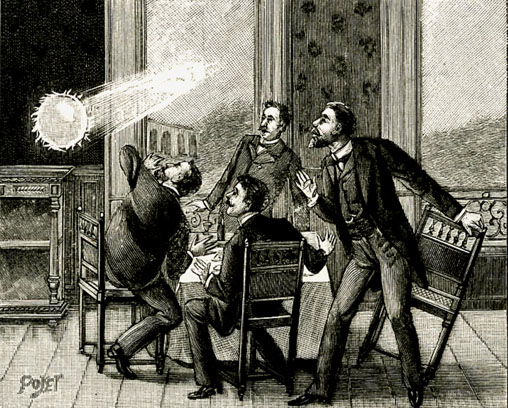
Theories: Despite numerous sightings, ball lightning remains a scientific curiosity without a universally accepted explanation. Here are some intriguing possibilities:
- Ionized gas: A lightning strike might ionize air molecules, creating a glowing ball of plasma that persists for a short time.
- Silicones and Microwaves: Another theory suggests that soil contains silicones that vaporize during a lightning strike. These vaporized silicones then interact with the microwave radiation produced by the lightning, creating the ball lightning effect.
- Combustion of flammable materials: In some cases, ball lightning might be caused by the ignition of flammable materials, such as methane gas, by a lightning strike.
While research continues, the exact cause and behavior of ball lightning remain a subject of scientific debate.
Read More: The 15 Greatest Unsolved Cryptic Puzzles That Will Baffle Your Mind
4. Animal Rain
Imagine the shock of fish, frogs, or even spiders raining down from the sky! While rare, there are numerous documented instances of animal rain throughout history. The creatures involved aren’t always aquatic; birds, worms, and even snakes have been reported falling from above.

Possible Theories: The most widely accepted explanation involves strong weather events such as tornadoes or waterspouts. These powerful forces can suck up animals from their natural habitats and transport them over long distances, later “raining” them down when the weather system weakens.
5. Earthquake Lights
Eerie flashes of light have been documented accompanying earthquakes, both before and during seismic activity. These earthquake lights can take various forms, including streaks of color near the ground, orbs of light floating up toward the sky, or short-lived bursts of blue or white light.

Possible Theories: Several theories try to explain this phenomenon:
- Piezoelectric effect: Quartz-rich rocks in the Earth’s crust, when subjected to immense pressure during an earthquake, could emit energy in the form of light.
- Triboluminescence: Friction between rock surfaces during an earthquake might cause luminescence, leading to the observed light flashes.
6. The Placebo Effect
The placebo effect demonstrates the incredible power of the mind over the body. Patients given inactive treatments (like sugar pills) can experience significant improvements in their condition simply because they believe they are receiving real medication. This phenomenon underscores the mind-body connection and the potential of positive expectations to influence healing.

Possible Theories: The mechanisms behind the placebo effect are complex and still being investigated. Some potential explanations include:
- Conditioning: Past experiences with medications can create positive expectations in patients, leading to similar responses even when given a placebo.
- Neurotransmitters: Belief in effective treatment can activate brain regions involved in pain relief and reward pathways, triggering the release of beneficial neurotransmitters like endorphins.
Read More: 15 Spine-Chilling Facts About the World’s Most Infamous Hauntings
7. Near-Death Experiences (NDEs)

Individuals who have been close to death sometimes report profound experiences, including sensations of leaving their bodies, feelings of peace, seeing bright lights, encountering deceased loved ones, or even life reviews. These NDEs are surprisingly common and remain somewhat of a mystery for the scientific community.
Possible Theories: Explanations for NDEs range from physiological to psychological:
- Oxygen deprivation: Lack of oxygen to the brain during a near-death event might induce hallucinations or altered states of consciousness.
- Neurological surge: Some theorize that a surge of brain activity as the body shuts down could lead to vivid experiences perceived as an NDE.
- Psychological coping mechanism: NDEs might be a way for the mind to process the trauma of a near-death experience and make sense of impending mortality.
8. Spontaneous Human Combustion (SHC)

This shocking and rare phenomenon involves cases where people are claimed to have burst into flames without any apparent external ignition source. The victims are often severely burned, with their surroundings relatively untouched, making it even more perplexing.
Possible Theories: Although scientifically disputed, here are some potential explanations put forward:
- The wick effect: This theory suggests a small external flame might ignite body fat that acts like a candle wick, slowly burning the body from the inside.
- Static electricity: A buildup of static electricity could potentially ignite flammable gases or substances within the body.
While SHC is a highly controversial topic, it raises questions about the limits of our understanding of combustion and its potential explanations.
Read More: 15 Unsolved Mysteries That Still Haunt Historians
9. Déjà Vu

Ever had that uncanny feeling of having already experienced a current situation, even though you know it’s impossible? That’s déjà vu – a French term meaning “already seen.” It’s a fleeting but disorienting sensation, often leaving us questioning the very nature of our memories and perception.
Possible Theories: Explanations for déjà vu cover various possibilities:
- Memory malfunction: One theory proposes that déjà vu is a glitch in our memory system, where a new experience is momentarily stored in the long-term memory section of our brain, making it feel familiar.
- Neurological overlap: Some hypothesize that a miscommunication between regions of the brain involved in processing present experiences and those responsible for recalling memories could create a false sense of familiarity.
- Divided attention: Occasionally, we unconsciously register details of our surroundings. When we consciously focus on our environment later, it feels strangely familiar, leading to déjà vu.
10. Precognition

Precognition refers to the purported ability to perceive or know things about the future before they happen, seemingly defying the laws of time and space. Reports encompass anything from fleeting feelings about an upcoming event to vivid dreams that later play out in reality.
Possible Theories: While highly debated, explanations for precognition include:
- Coincidence and selective memory: Many “precognitive” experiences might simply be coincidences that we tend to remember more vividly or pay undue attention to, creating the illusion of foresight.
- Quantum entanglement: Some theorize that on a quantum level, time might not be as linear as we perceive it, leading to potential “leakage” of information from the future.
11. The Wow! Signal
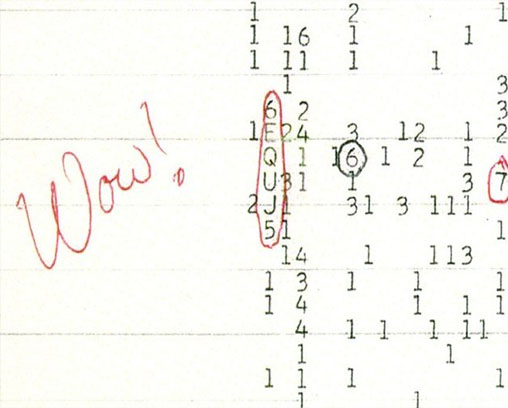
In 1977, a radio telescope detected a brief but incredibly strong signal from deep space. This 72-second radio burst, dubbed the “Wow! signal,” bore all the hallmarks of a potential extraterrestrial communication. Despite repeated attempts, the signal has never been detected again.
Possible Theories: The origin of the Wow! signal sparks much speculation:
- Extraterrestrial message: The signal’s characteristics suggest the possibility of intelligent alien origin.
- Natural astronomical phenomenon: The signal might have originated from a rare celestial event, such as a comet or other astronomical body, as yet undiscovered.
12. The Taos Hum

Residents of Taos, New Mexico, and some surrounding areas, report a persistent low-frequency humming sound. Like the more global “Hum,” this localized phenomenon only affects a small percentage of the population, creating a frustrating mystery.
Possible Theories: Explanations for the Taos Hum remain elusive:
- Industrial sources: The Hum could originate from machinery, pipelines, or other industrial equipment in the region.
- Geological processes: Underground movements in the Earth might create vibrations perceived as a hum.
- Mass hysteria or psychological factors: In some cases, the perception of the Taos Hum might be amplified by shared anxiety or collective suggestibility.
Read More: 15 Legendary Lost Treasures: Fact, Fiction, and the Hunt Continues
13. Naga Fireballs

Unexplained reddish balls of light have been witnessed rising from the Mekong River in Southeast Asia for centuries. These “Naga fireballs” typically appear around October and November, leading to local festivals and traditions.
Possible Theories: Several theories attempt to explain this phenomenon:
- Swamp gas: The Mekong River is rich in organic matter. Gases like methane produced by its decomposition might ignite as they reach the surface, forming glowing orbs.
- Phosphine gas: Phosphine, another flammable gas, might form spontaneously under specific conditions and ignite upon contact with air.
14. The Bloop
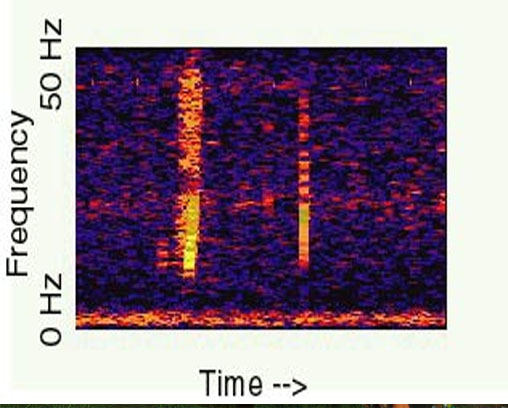
In 1997, underwater hydrophones operated by the National Oceanic and Atmospheric Administration (NOAA) detected a powerful, ultra-low-frequency sound in the remote South Pacific Ocean. This mysterious sound, dubbed “The Bloop,” was significantly louder than the calls of any known marine animal.
Possible Theories: The source of The Bloop remains an enigma, fueling speculation and hypotheses:
- Unknown marine creature: One enticing theory proposes that The Bloop might have been produced by a giant, undiscovered sea creature.
- Icequakes: The cracking and calving of large icebergs can generate powerful low-frequency sounds. This could be a potential explanation for The Bloop.
15. Dark Matter
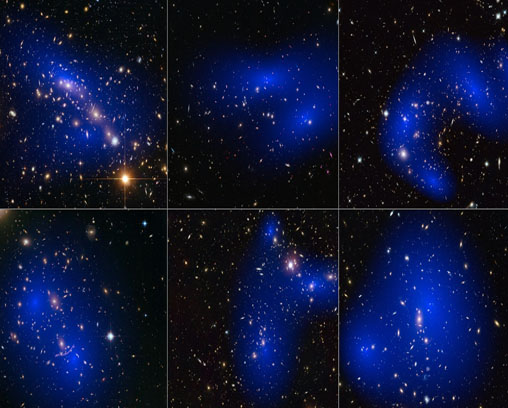
Astronomers theorize that most of the universe’s mass (around 85%) consists of an invisible substance known as dark matter. While we can’t directly observe it, its existence is inferred from its gravitational effects on visible matter like stars and galaxies.
Possible Theories: The nature of dark matter remains one of the great mysteries of modern physics. Here are some leading possibilities:
- WIMPs: Weakly Interacting Massive Particles are hypothetical particles that interact very weakly with normal matter, making them difficult to detect.
- Axions: Another theoretical particle, axions, could also be candidates for dark matter.
- Primordial black holes: Black holes formed in the early universe could potentially account for some or all of dark matter.
Conclusion:
Our exploration of these 15 unexplained scientific phenomena serves as a humbling reminder of the vastness and complexity of the universe. While they might seem enigmatic or even paranormal, these mysteries spark curiosity and drive scientific progress. It is possible that some of these phenomena will find explanations as our understanding of the universe expands. Others might forever remain on the fringes of scientific understanding, fueling our imaginations and reminding us of the wonders yet to be discovered.
15 FAQs (frequently asked questions):
-
Are any of these phenomena truly paranormal or supernatural?
Though some of these phenomena might seem otherworldly, scientists generally aim to find natural explanations. Paranormal explanations typically lie outside the realm of current scientific understanding.
-
Which of these phenomena are most likely to be explained in the near future?
Phenomena with existing theories that are gaining support, like ball lightning or the placebo effect, have a higher likelihood of near-future explanations.
-
Could any of these phenomena pose a threat to humans?
While some phenomena like earthquake lights might precede dangerous events, the phenomena themselves are generally not considered directly harmful. One notable exception is Spontaneous Human Combustion, but the very existence of this phenomenon is highly debated.
-
Is it possible that some of these phenomena are interconnected?
It’s intriguing to think that some could share underlying causes. For example, unusual geological activity might potentially link phenomena like the Hessdalen Lights, some instances of the Hum, and earthquake lights.
-
How can I get involved in researching unexplained phenomena?
Depending on your interests, consider citizen science projects, amateur astronomy, or following the work of organizations dedicated to studying anomalous phenomena.
-
Is there a scientific consensus on any of these phenomena?
No, the very nature of these phenomena means they lack mainstream scientific explanations. Debate and competing theories are common.
-
Could any of these phenomena be evidence of extraterrestrial life?
While it’s a captivating idea, there’s no concrete evidence directly linking any of these phenomena to aliens. However, signals like the Wow! signal keep the possibility open.
-
Why does science have trouble explaining these phenomena?
Reasons vary. Some are rare and hard to study, while others challenge current scientific models. Often, more data and research are needed.
-
What is the most mind-blowing unexplained phenomenon, in your opinion?
This is subjective! Whether it’s near-death experiences, dark matter, or something else, these phenomena invite personal reflection on the universe’s mysteries.
-
Will we ever solve all these mysteries?
Perhaps! Science is always evolving. New discoveries may provide answers. Yet, some mysteries might forever tantalize us, fueling our curiosity.
-
Do near-death experiences prove the existence of an afterlife?
There is no scientific consensus. NDEs are a fascinating topic for both science and spirituality, open to various interpretations.
-
Could precognition or déjà vu suggest a different nature of time?
They raise intriguing questions about how we experience time and consciousness. Research into quantum physics might offer insights in the future.
-
Is dark matter related to other unexplained phenomena?
Currently unknown, but it’s a fascinating area for speculation as dark matter fundamentally affects how the universe works.
-
What if some of these mysteries are deliberately hidden from us?
While a tantalizing idea, it’s essential to prioritize evidence-based explanations and avoid unfounded conspiracy theories.
-
Where can I find reliable sources on unexplained scientific phenomena?
Look for university websites, scientific journals, or reputable organizations. Be critical of claims lacking peer-reviewed research.




